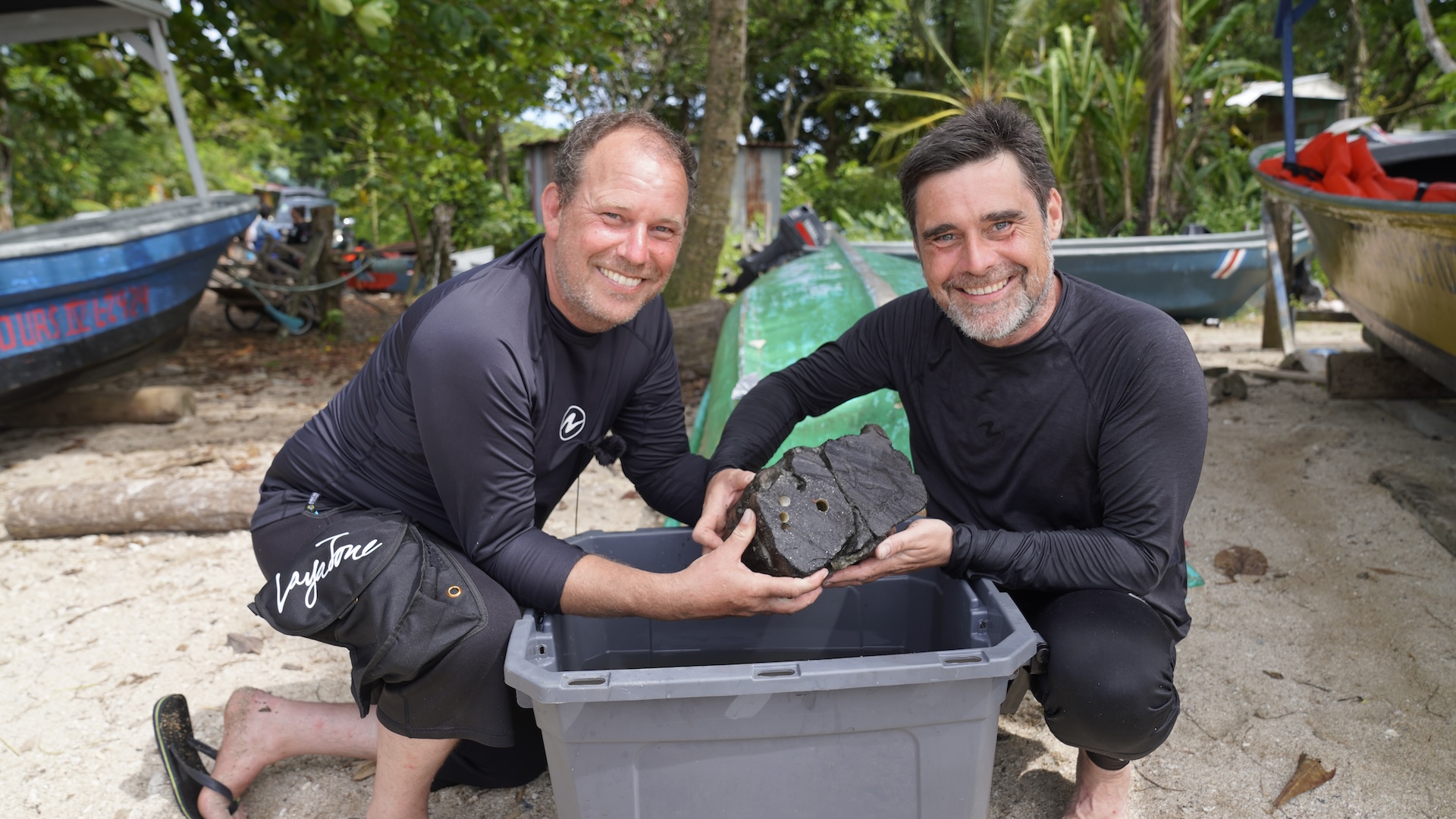Centuries-old shipwrecks off the coast of Costa Rica, long thought to have been the property of pirates, are actually Danish ships that took part in the 18th-century transatlantic slave trade, new research reveals.
The two shipwrecks sit in the shallow waters off the coast of Cahuita National Park in southern Costa Rica and have been known about for decades. But a chance find of unique yellow bricks near one of the wrecks, followed by a more in-depth investigation of the ships’ contents and wood, enabled marine archaeologists from Denmark to confirm that the wrecks were actually 18th-century Danish slave ships.
These shipwrecks are now thought to be the remains of the Fridericus Quartus and Christianus Quintus, which disappeared off the coast of Central America in 1710, and until now, had never been found.
“It’s been a long process and I’ve come close to giving up along the way, but this is undoubtedly the craziest archaeological excavation I’ve yet been part of,” Andreas Kallmeyer Bloch, a marine archaeologist and museum curator at the National Museum of Denmark, said in a statement. “Not only because it matters greatly to the local population, but also because it’s one of the most dramatic shipwrecks in the history of Denmark, and now we know exactly where it happened.”
The Fridericus Quartus and Christianus Quintus were large ships used by the Danish West India Company, which operated Denmark’s transatlantic slave trade between West Africa, the Danish West Indies (including the modern-day islands of St. Thomas, St. Jan and St. Croix), and Denmark. Though smaller in scale compared to the British, French or Portuguese empires, Denmark was an active participant in the transatlantic slave trade from the mid-1600s until the early 1800s, according to the Digital Encyclopedia of European History. More than 120,000 enslaved Africans were transported by the Danish West India Company alone.
Related: Plantation slavery was invented on this tiny African island, according to archaeologists
According to the National Museum of Denmark, historical sources state that both of the ships sank in 1710. As the Fridericus Quartus was preparing to leave Ghana, the enslaved people broke out of their shackles and rebelled. But the rebellion failed and the ship’s crew cut off their leader’s hands and then decapitated him. To protect against further unrest, the Christianus Quintus accompanied the Fridericus Quartus, bringing the total number of people on both ships to 800. But they got lost on their way to the Dutch colony of St. Thomas and were running low on food. The crew threatened mutiny, demanding the enslaved people be released so the crew could divide the ship’s remaining food among themselves.
The captains agreed, and around 600 enslaved people ended up on the shores of Costa Rica, after which the Fridericus Quartus is thought to have caught fire. The Christianus Quintus, meanwhile, had its anchor rope cut and was promptly smashed to pieces by the waves. However, the exact site of the wrecks remained unknown.

Yellow bricks
The two wrecks off the coast of Costa Rica had long been known to locals, and were assumed to be pirate ships due to their broken-up state, suggesting that they may have sunk after battling one another. However, this assumption was challenged in 2015 after archaeologists found yellow bricks in one of the ship’s remains.
The clay from this yellow brick was analyzed, leading to its identification as a Flensburg brick. These bricks were used almost exclusively in Denmark and its colonies, and were only made in very particular places in Denmark.
Now, after a subsequent underwater excavation in 2023, the National Museum of Denmark has now revealed their findings.
“The analyses are very convincing and we no longer have any doubts that these are the wrecks of the two Danish slave ships,” David Gregory, a marine archaeologist and research professor at the National Museum of Denmark, said in the statement.
During the expedition, marine archaeologists from the National Museum of Denmark and the Viking Ship Museum dove to the shipwrecks and took samples of wood, bricks and several clay pipes that they discovered.

Scientists performed dendrochronological analyses, also known as tree-ring dating, on the wood samples from the ships, which showed that they were made from oak timber that had originated in the western Baltic, specifically northeastern Germany, Denmark or Sweden. Additionally, the wood was confirmed to have been from a tree that was cut down between 1690 and 1695, and showed signs of being burned before the ship sank, consistent with historical reports of the ships having caught fire.
The brick samples were also analysed, which showed that they were indeed Flensburg bricks and had been manufactured in either Iller Strand or Egernsund, both hubs of 18th-century brick production situated near Flensburg Fjord.
Additionally, the clay pipes were identified as having been produced by the Dutch just before 1710, when the Fridericus Quartus and Christianus Quintus sank. These pipes were often used by Danish sailors, and were also not generally used for more than five years.
“The bricks are Danish and the same goes for the timbers, which are additionally charred and sooty from a fire,” Gregory said. “This fits perfectly with the historical accounts stating that one of the ships burnt.”
